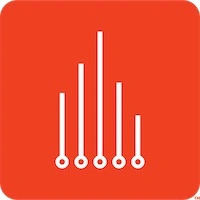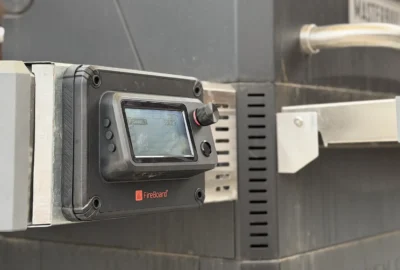Manufacturing, Science
Using FireBoard 2 Pro for Reflow Profiling
In October 2019, FireBoard began producing our own circuit boards with the addition of a surface mount assembly line. The final stage in our PCB assembly line is a BTU Pyramax 8-zone reflow oven. This is where the melting and then cooling of solder creates electrical connections between surface-mounted components and the board. Unlike a conventional food oven, the Pyramax reflow oven uses 8 stages of heating and a final cooling stage to ensure proper bonding of the components to the PCB and to form secure and reliable solder joints.

This BTU Pyramax reflow oven is the final step on the PCB line at FireBoard Labs. Periodic calibration checks are performed using a FireBoard Pro and a purpose-built type-K thermocouple probe.
Building a Reflow Profile
To ensure the oven is properly set for the board being assembled, Matthew Zuiss, one of FireBoard’s techs, can test the oven’s performance. This process ensures proper soldering of electronic components onto the PCB by comparing the reading to the specific temperature profile provided by the component manufacturer (this is known as the reflow profile). All to ensure the melting and solidification of solder at different stages, ensuring reliable and consistent connections.

A special probe is made by soldering type K thermocouple wire to a dummy circuit board that is run through the oven, reading all of the temperatures an actual PCB would be exposed to in the production process.
Zuiss explains, “We are looking at how quickly temp rises—and how long it stays at that temp. According to the chip manufacturer, it should be at peak temp for a specific amount of time.” If needed, adjustments are made to the oven’s zone temperatures and conveyor speeds.

An example chart showing the reflow profile from Coilcraft on best practices of soldering their components. Click here to learn more about Coilcraft and its components.
A Purpose-Built Thermocouple Probe
To perform his measurements, Matthew uses a stock FireBoard 2 Pro and a special probe made from a length of Type K thermocouple wire soldered to a special circuit board. The oven’s conveyors carry the special board through the oven, giving real-time measurements.

Over 30 feet of type K thermocouple wire used to measure the running temperature of FireBoard’s reflow oven.
How Does a Thermocouple Work?
The function of a thermocouple probe is a fascinating reaction between of two different metals joined together. When exposed to temperature changes, these metals produce a voltage due to the Seebeck Effect. The temperature is then measured by interpreting the voltage generated.

The FireBoard 2 Pro and the K-type connector plug. Printed on the side are the indicators of which metal is for positive connection and which is used for negative.









2 Comments
Bob Camp
Hi
For even more fun, rig up multiple thermocouples and space them out over the width of the conveyor. Then you can spot even more issues.
Bob
Jeff Nichols
Hey Bob, thanks for the suggestion!